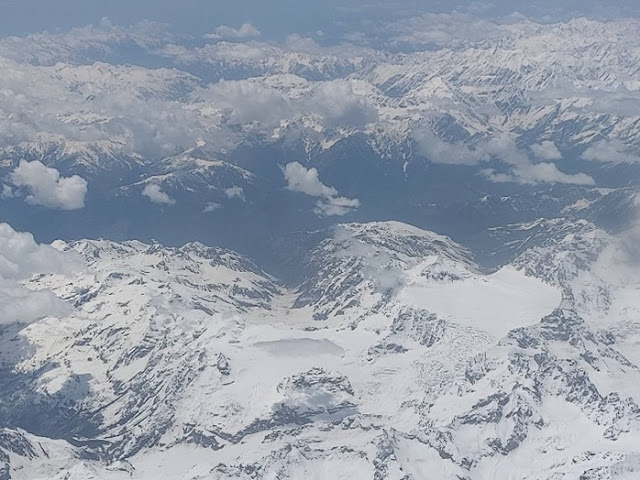Ladakh #1 - Bro's and Plains
For our Himalayan vacation, we went to Ladakh. The view from the plane was great – on most flights, you see nothing below when there is a gap in the clouds. Here, the Himalayas were visible in almost every gap.
We landed in the
afternoon at Leh, which is at a height of 11,500 feet (For
comparison, both Srinagar and Vaishno Devi are at 5,200 feet, half the height).
Our itinerary for that day? Do nothing, just rest and acclimatize to the lesser
air and oxygen, our travel agency had told us (Here, you need permits for
everything, so it’s best to go through a local agent).
(In case you
wondered, it’s the same concentration of oxygen – 21% - just that
there’s less air at that altitude, and 21% of “lesser” translates to
less oxygen)
The hotel we
stayed in was very luxurious (the Zen Ladakh) – it was one of the venues for the G20
summit. It was centrally heated, and to my 11 yo daughter’s immense relief, had
free Wi-fi. That evening, we walked to and from the nearby market, nervous if
we were over-exerting ourselves. We were very proud it didn’t feel any
different – it shows how fit we are, we prided ourselves. Later, a guy from the
travel agency dropped by and we asked him how long it takes for the altitude to
hit you. He pricked our bubble when he said that it doesn’t affect most people,
but it’s a precaution worth taking. Ouch!
The next day, our
driver-cum-guide informed us that Ladakh was an independent kingdom that had
fallen to Kashmir ages back. Now the government had made Ladakh separate again.
The religion here is Buddhism, and the people look like North-Eastern folks.
During our stay, we’d gradually realize Ladakh is huge, sparsely populated,
everything is a long drive away, and the Army is critical to the place. Not
just for security, but also they are the ones who build the roads. We saw
amusing all-caps signs posted everywhere with the word “Bro” – that’s
like yaar in Hindi. Slogans like “SLOW DOWN BRO”, “IF YOU LOVE HER,
DIVORCE SPEED BRO” and “BE MR LATE THAN LATE MR, BRO”. Much later, we realized
this wasn’t “bro” as in yaar. Rather, it stood for BRO – Border Roads
Organization. That’s the army unit that builds and maintains roads on the
border! The army has a good sense of humour.
We went to a
couple of local monasteries, a gurudwara that was maintained by the
Army, and the very beautiful Shanti Stupa.
This is not very
old, funded by Japan post-Hiroshima, a message of peace.
Next, we went to
an Army museum where I realized that almost all the known flash points in the
Himalayas are in Ladakh! From Kargil to Siachen to Galwan. A tourist point on
the way is called Magnetic Hill. In true tourist style, the signboard says
“The Phenomenon That Defies Gravity”. It’s an optical illusion:
“The
layout of the area and surrounding slopes create the optical illusion of a
hill. The hill road is actually a downhill road. Objects and cars on the hill
road may appear to roll uphill in defiance of gravity when they are, in fact,
rolling downhill.”
Still, it’s fun
when the car rolls “up” the slope when the engine is turned off.
After that, we
went to a scenic place called Sangam Point. As the name suggests, it is the meeting
point for two rivers – the Indus and Zanskar. The two rivers have very
different colors, making it obvious they are not the same (the blue-green one
is the Indus, the muddy brown one on the right is the Zanskar).
I was very surprised that the Indus had, er, so little water. Our guide explained that this was summer. We’d notice this pattern throughout the trip – the river beds barely had any water, but the path carved by a huge river was evident everywhere. One could see the effect of two massively powerful forces side by side – the tectonic plates that had created the massive Himalayas, and the erosive power of water.



Comments
Post a Comment